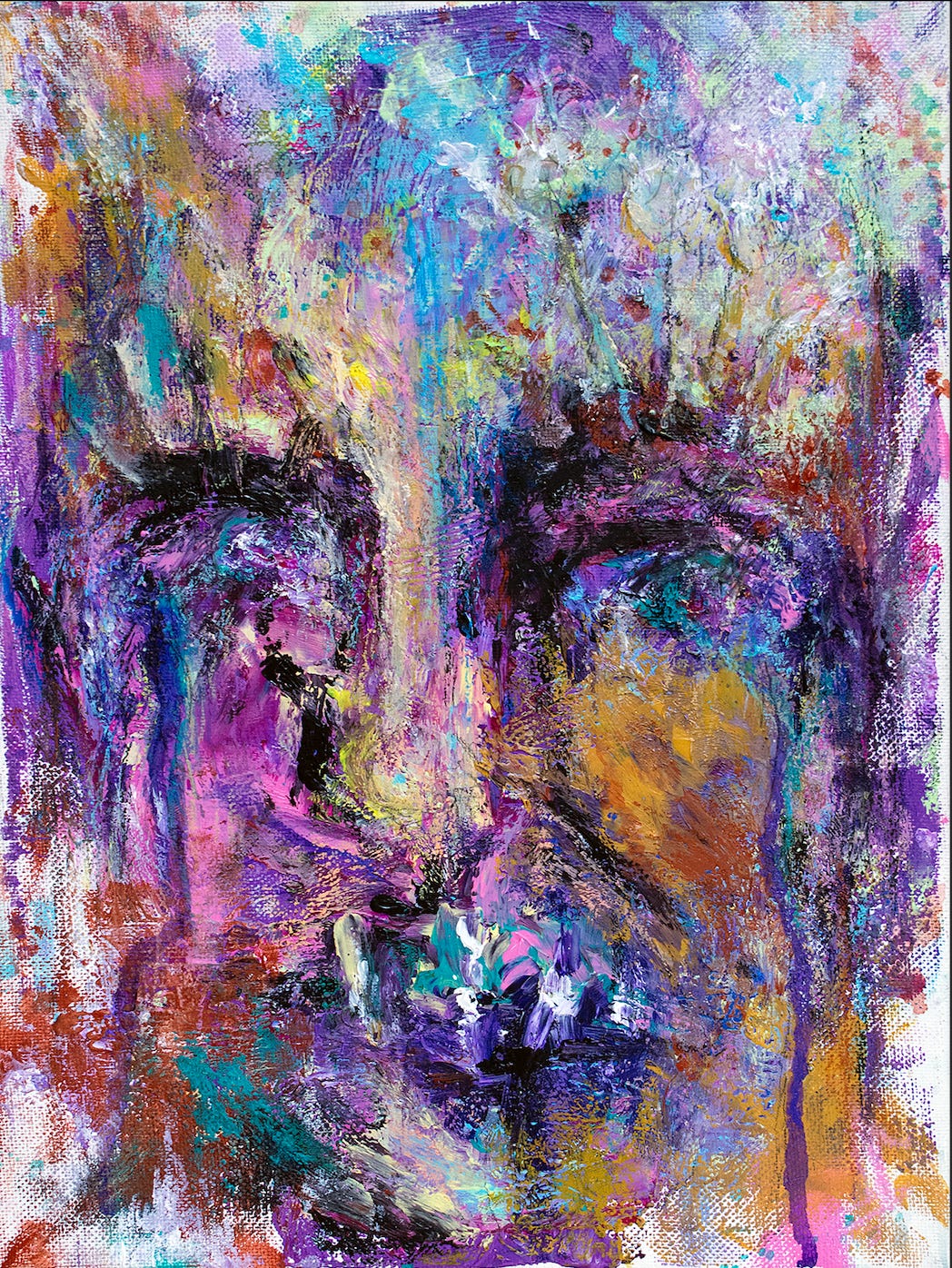Space Rituals
Hawkwind was In Search of Space.
Phil Lesh was Searching for the Sound within space.
When painting, I search for a conversation between me and the piece I am working on.
Whether it’s music or art, it is an exploratory journey through time, space, sound, color, lines, shapes, and emotions. Sometimes, the space and conversations can manifest as repetitive patterns and be prismatic, lush, and warm. Other times, they may appear sparse, minimal, monochrome, and even devoid of color.
Throughout the creative journey, one often never knows where they are headed or going. Yet, trusting the process as you search for space and sound while engaging in meaningful creative conversations makes it a fulfilling and rewarding experience for both the artist and their audience to undertake.
It can also be challenging for the artist because art rarely, if ever, happens easily. However, these struggles bring us closer to the truth, as creative hardships require honesty.
Sadly, in today’s digital world, where AI has mapped everything perfectly with its algorithms, there is an overwhelming loss of honesty, authenticity, and what is real.
This includes art and music.
Keeping it real is the most honest thing an artist can do. Embracing your curiosity and imagination while allowing yourself the grace to make mistakes and experience unexpected creative adventures is essential. As you navigate the journey and trust the process, clarity always emerges in the spaces you explore. The conversation you engage in will also eventually make sense, helping you discover your artistic voice and the creative direction you are meant to follow.
“To be honest, most of the time, I don’t really know what I’m doing; I’m just trying things,” My goal is to create a situation where accidents can happen—hopefully good accidents. There’s never perfection; I’m not looking for that. I’m just looking to get something that I didn’t expect. Because then, hopefully, people listening will hear something that they weren’t expecting.”1 - Steven R. Smith
There is a haunting, meditative, ethereal, and sometimes sentimental beauty in Steven R. Smith's ambient soundscapes. As with free jazz, the journey is unpredictable; you never know where you are headed and what may or may not happen along the way. His numerous solo albums and aliases frequently feature cover art adorned with illustrated landscapes, flora, or soft, blurred lines, shapes, and hues that hint at the journey that awaits the listener.
Music often speaks to me in color, and there's an underlying darkness present in Smith's instrumentals. They evoke a rich palette of deep greens, blues, purples, reds, and blacks. Brighter colors like yellow, orange, pink, powder blue, lavender, and white are rarely used, but when they are, they are purposely placed as an accent of sonic splendor or enlightenment to help guide us as we travel through his aural landscapes.
The space that Smith carves out can be dense and tangled like a jungle or as expansive as the desert sky, with its millions of stars and planets reaching out to dazzle our eyes and surround us in the overwhelming mystery of it all.
Or, his compositions can be sparse, reminiscent of a Yves Tanguy painting. A shallow horizon line, subdued, muted hues, and peculiar, unsettling forms remind us that we are not alone in this space that Smith has sculpted with sound.
Sometimes, the songs feel like sketches and ideas for grander visions; other times, the composition is meticulously crafted and paced, becoming our musical map leading us from point A to Z.
All of his songs, however, feel like spontaneous creations born from a moment of inspiration, where Smith engages in intimate dialogue with the sounds around him. There is also a sense that, like jazz, they cannot be faithfully reproduced again.
And that's OK.
As with a painting, once it's complete, it stands as it is, and the artist moves forward. This is the essence of Smith's work—an intriguing enigma, quietly documenting and exploring space and sound through sonic dialogue. He embraces the mystery of the journey and trusts the process. Once recorded, the music is released into the world, inviting listeners to embark on their own unexpected musical explorations.
This path of artistic self-discovery is undeniably the most authentic journey and conversation one can undertake. It may be spiritual, religious, meditative, or creative, but more often than not, it intertwines with a combination of some or all.
It’s this profound and beautiful fusion that truth and artistry unite and often results in something genuinely extraordinary.
Masters, Marc. “Genres of One: Exploring a host of artists who carve out musical categories of their own.” Pitchfork: The Out Door, February 7, 2014.







Thanks for the music shares and for sharing your thoughts on the creative process. Yes, it's so important to trust the process, isn't it? To turn up for it, even when you're not sure if anything will come of it--perhaps especially then. I didn't know Steven R. Smith's work. I've added Triecade to my ongoing 2025 album playlist, which is starting to populate quite well over the last couple of weeks.
Great description of the creative process. When I wrote my first novel, I mapped it out in detail chapter by chapter, then, when I started writing, found it go where it wanted to go. It's an incredibly fun ride once you give up control because you never know what's going to happen.
Really taken with your painting.
Smith's Portico Tiles was quite affecting.